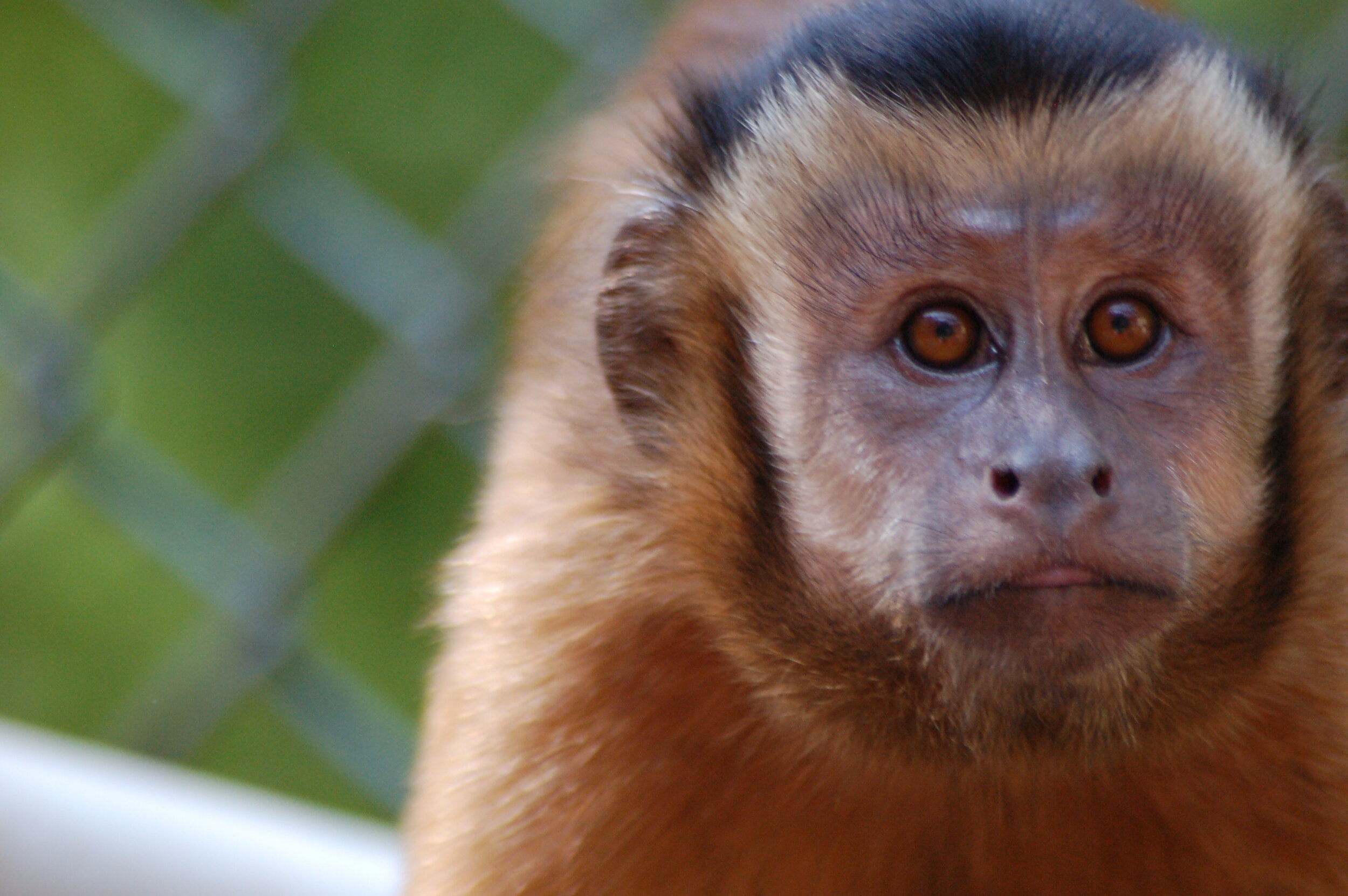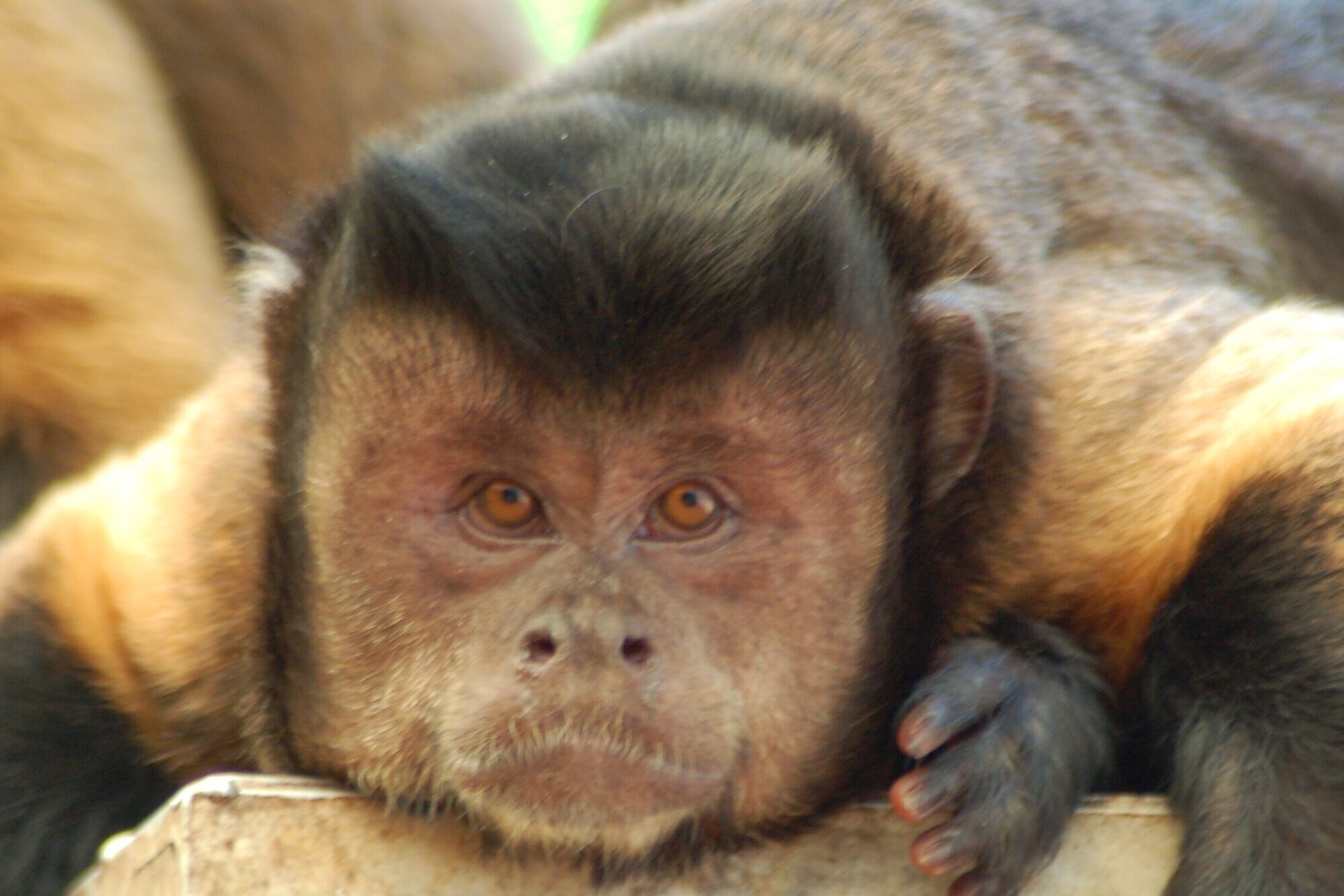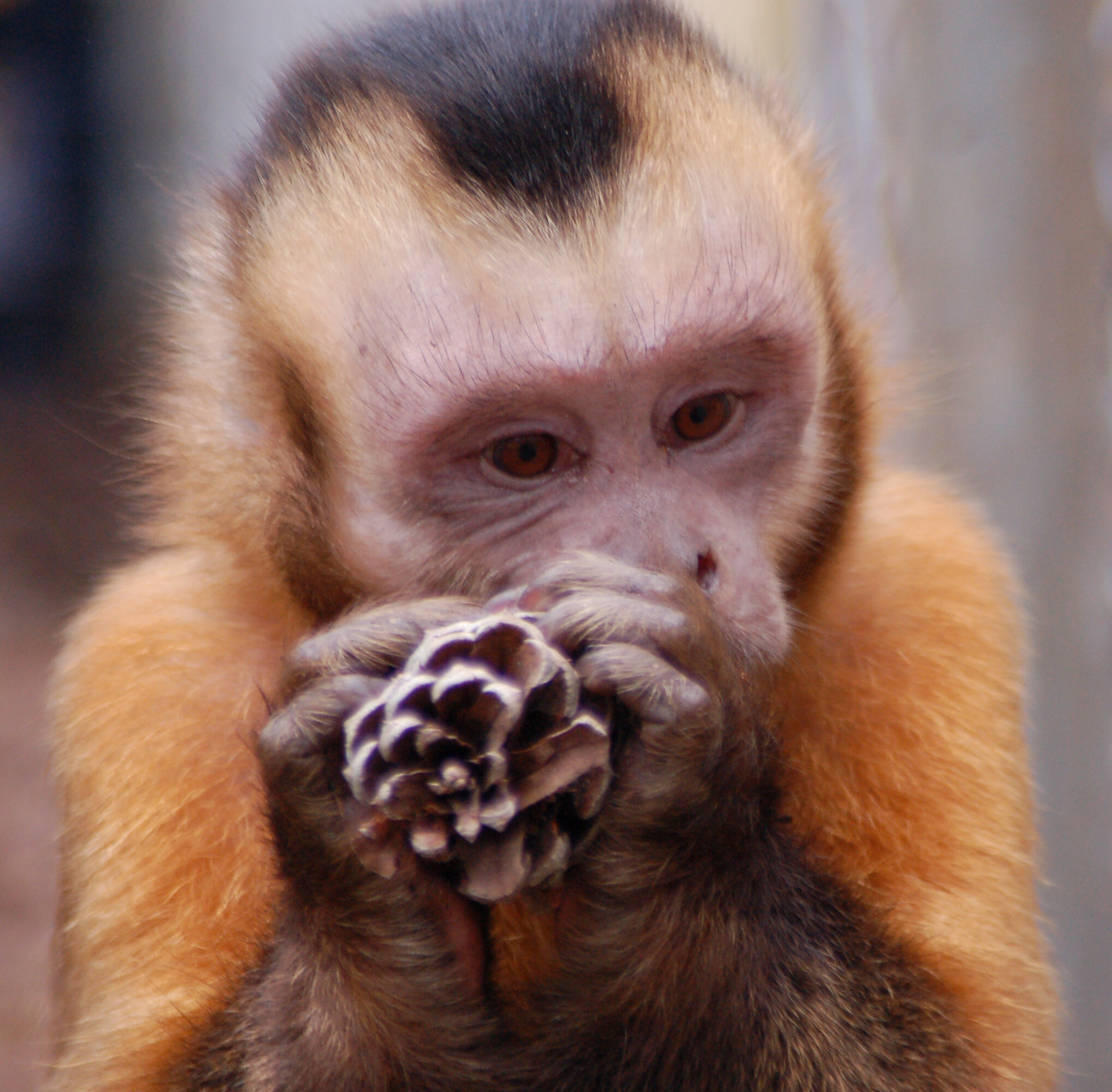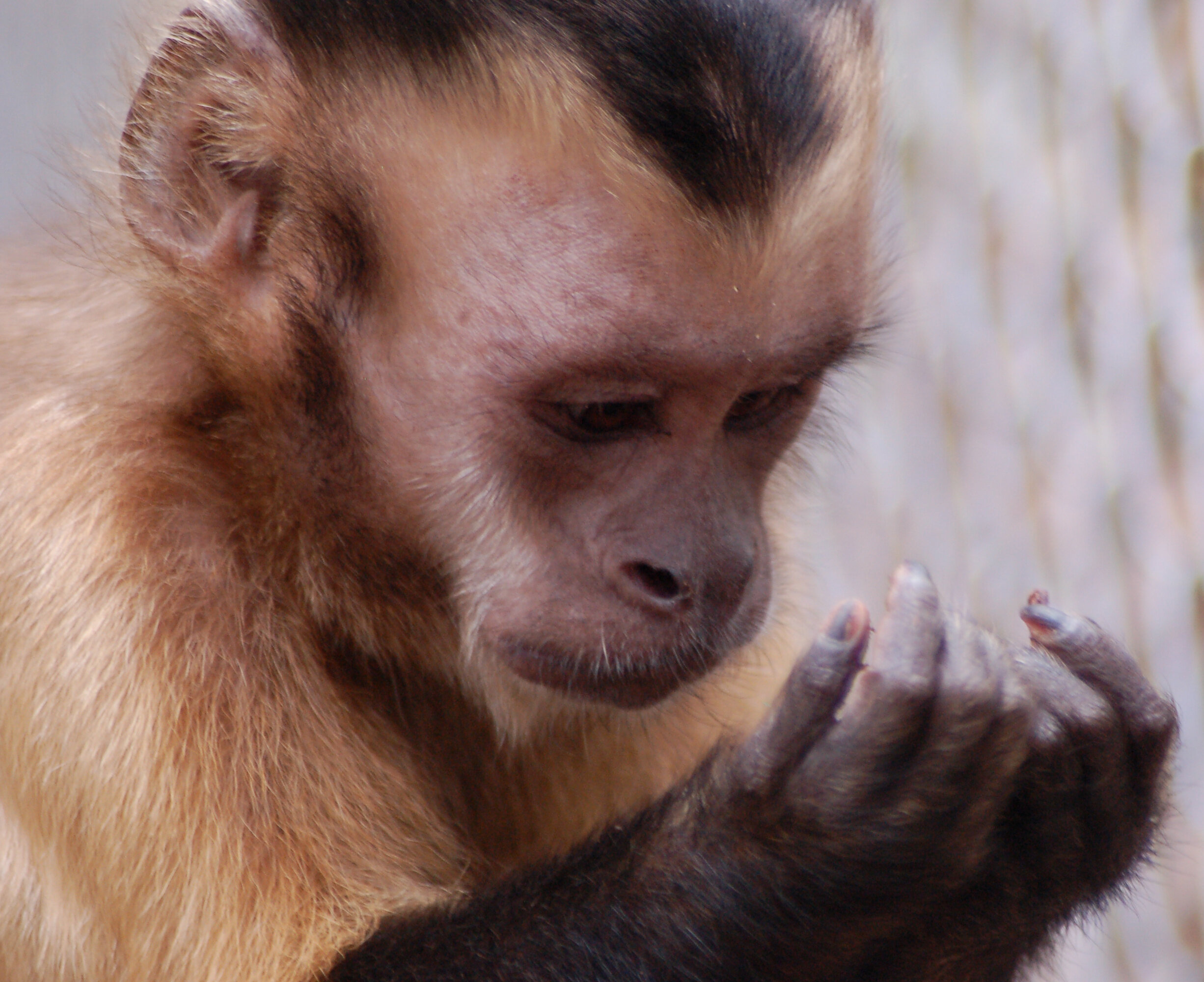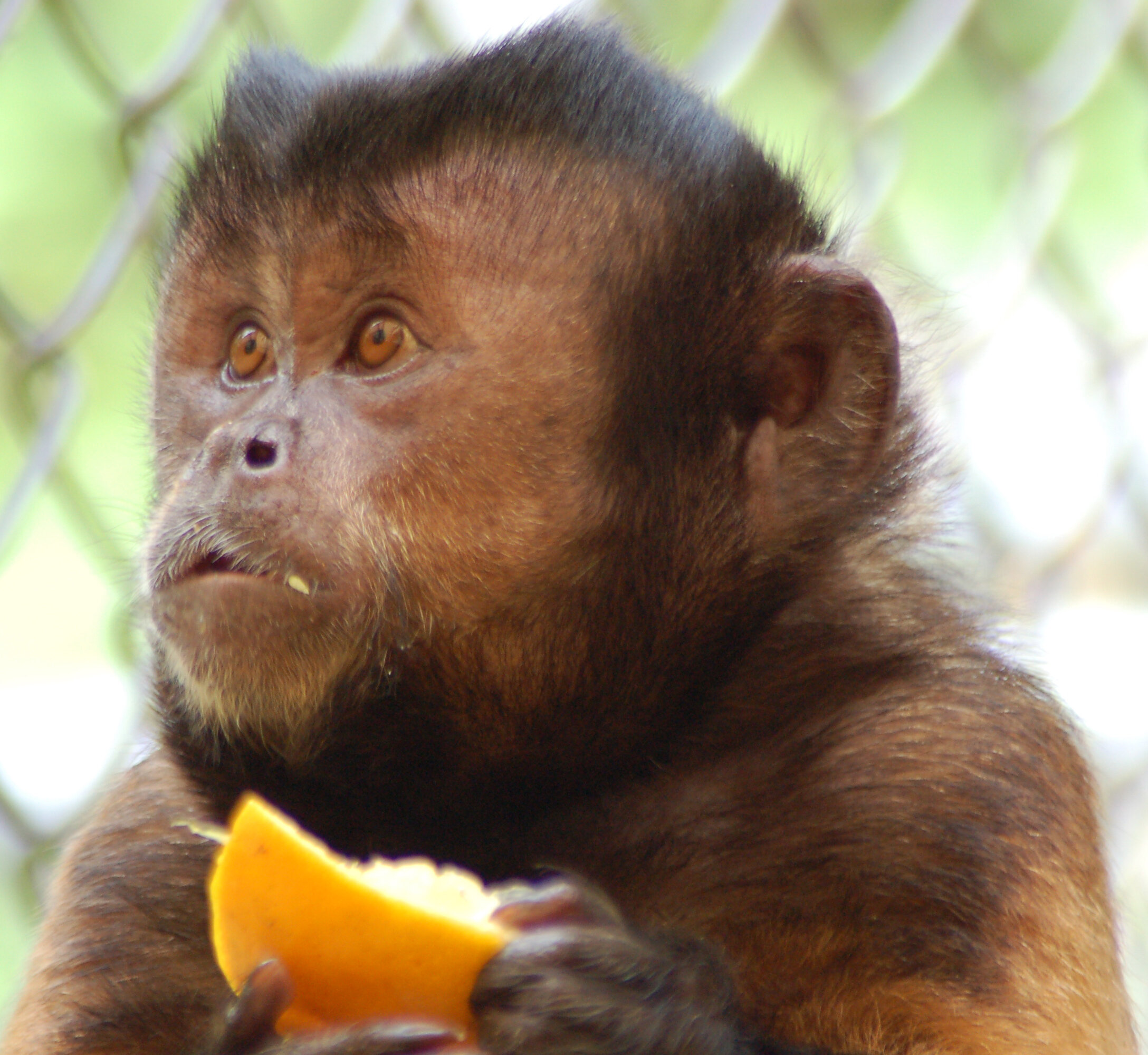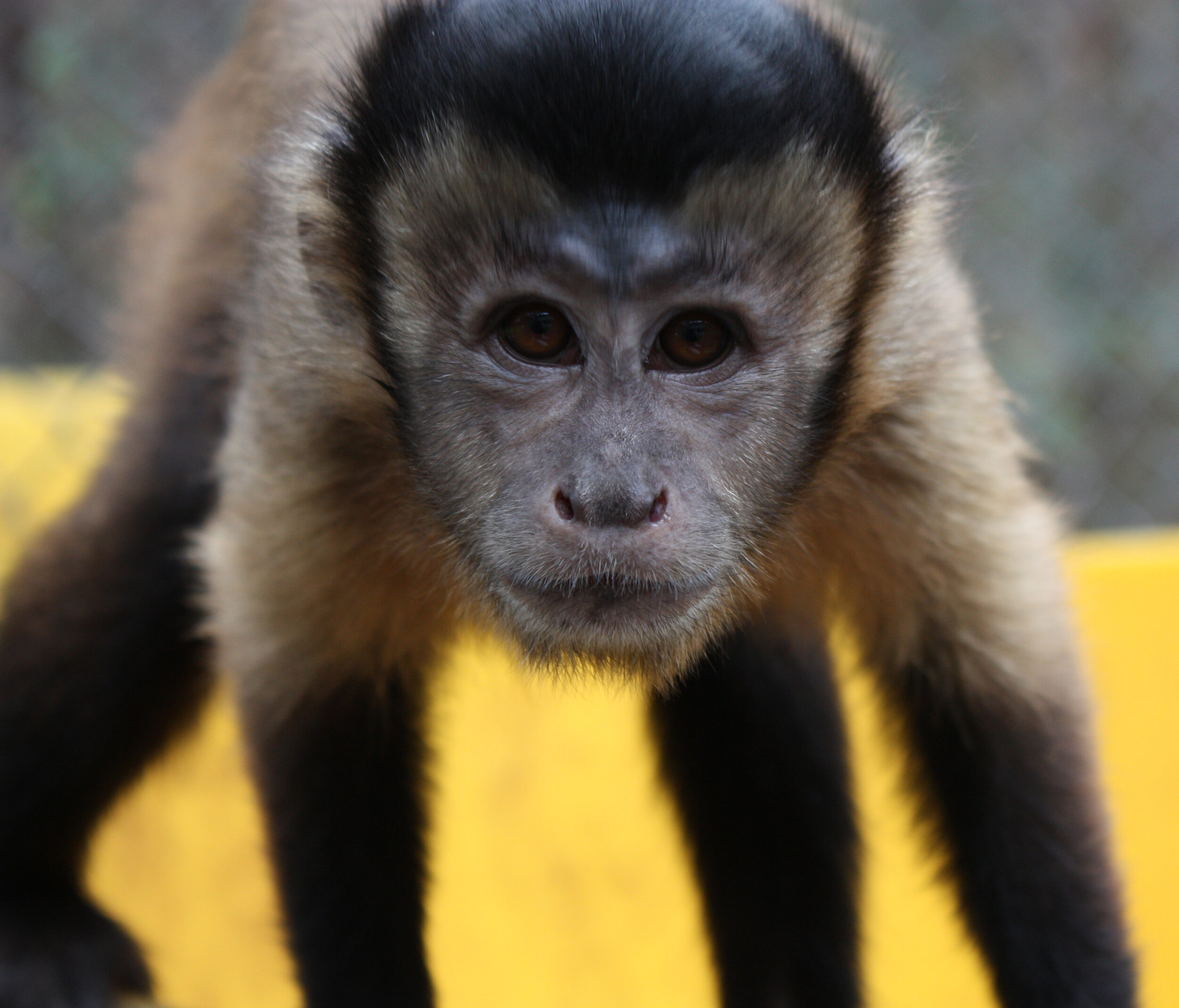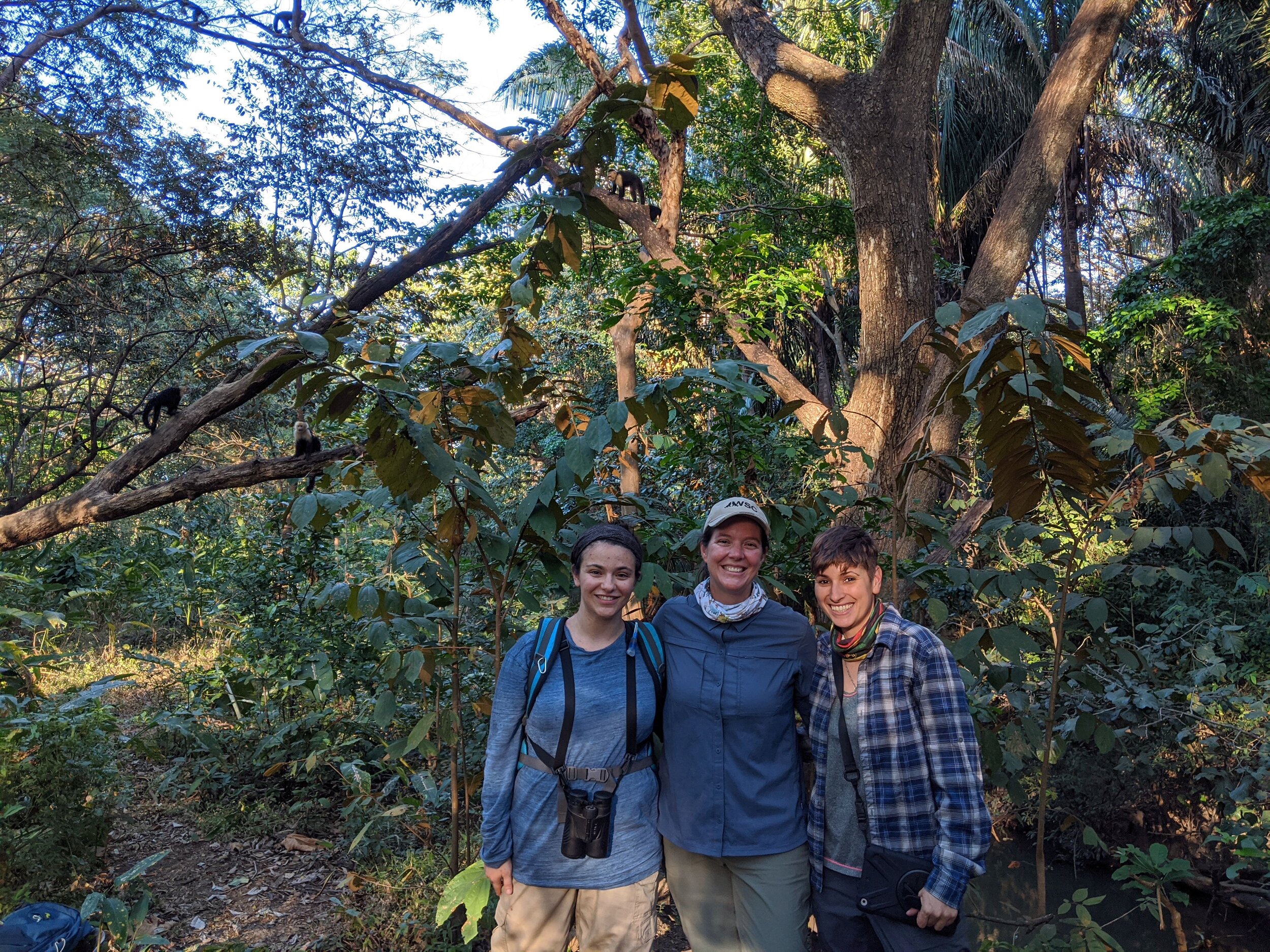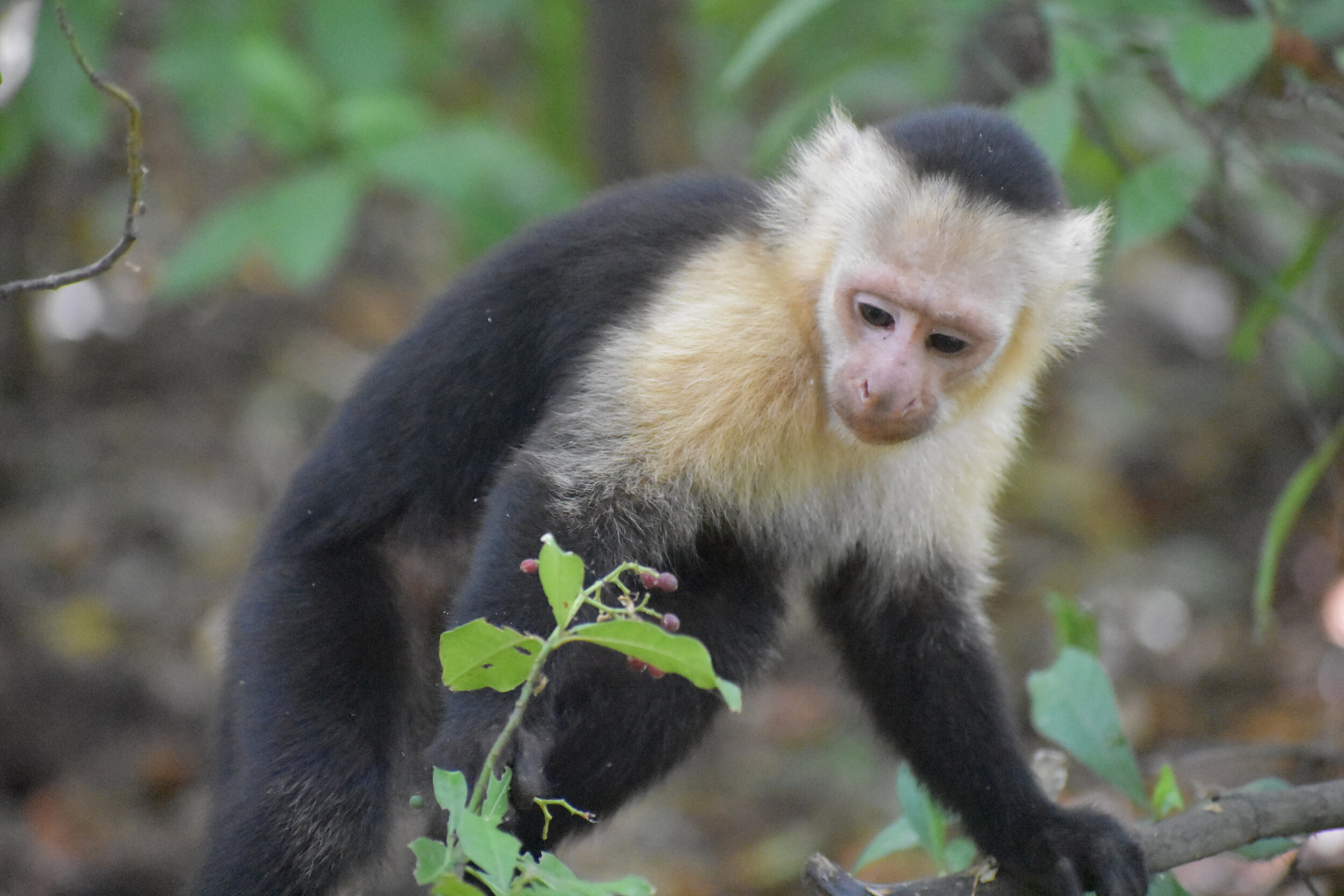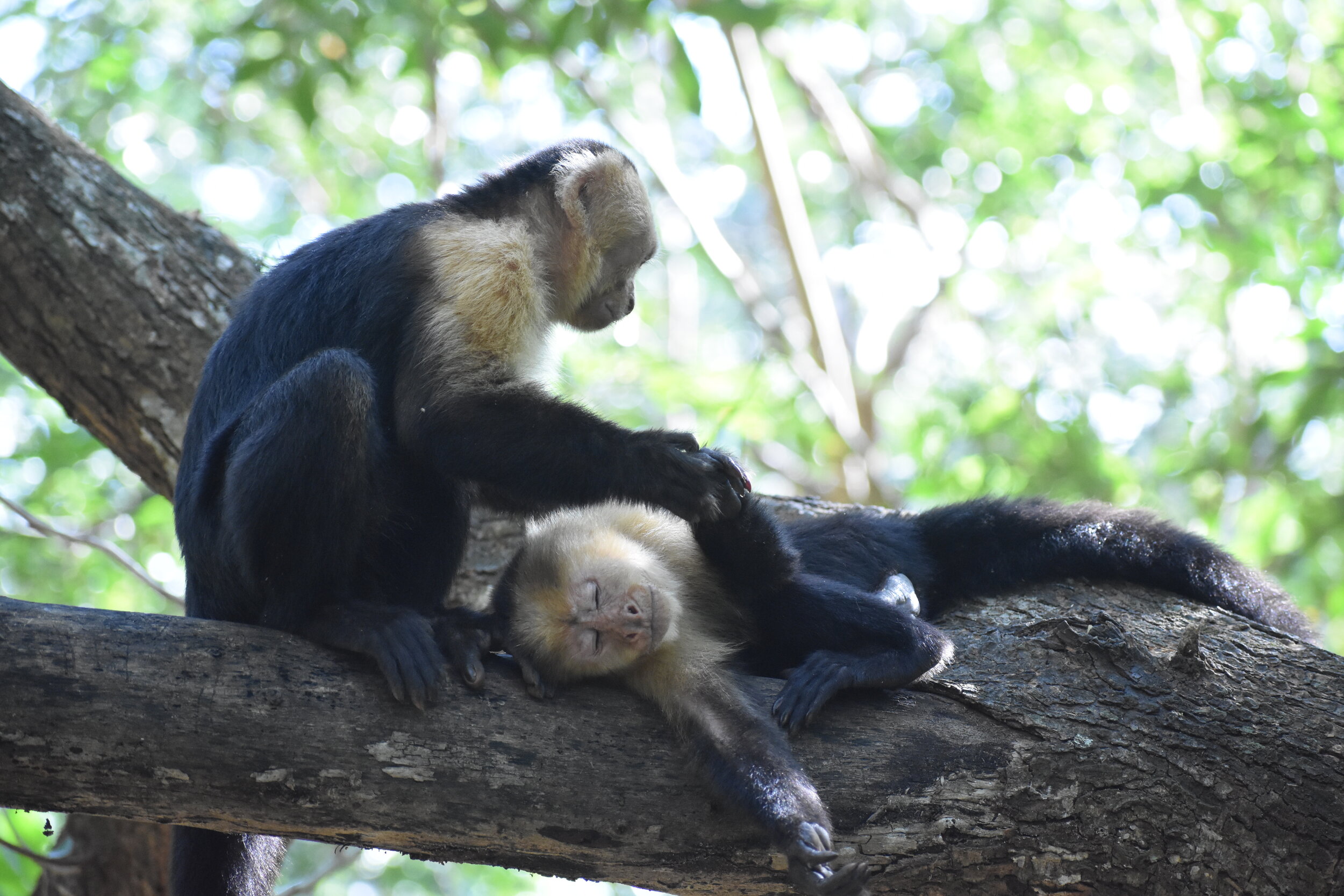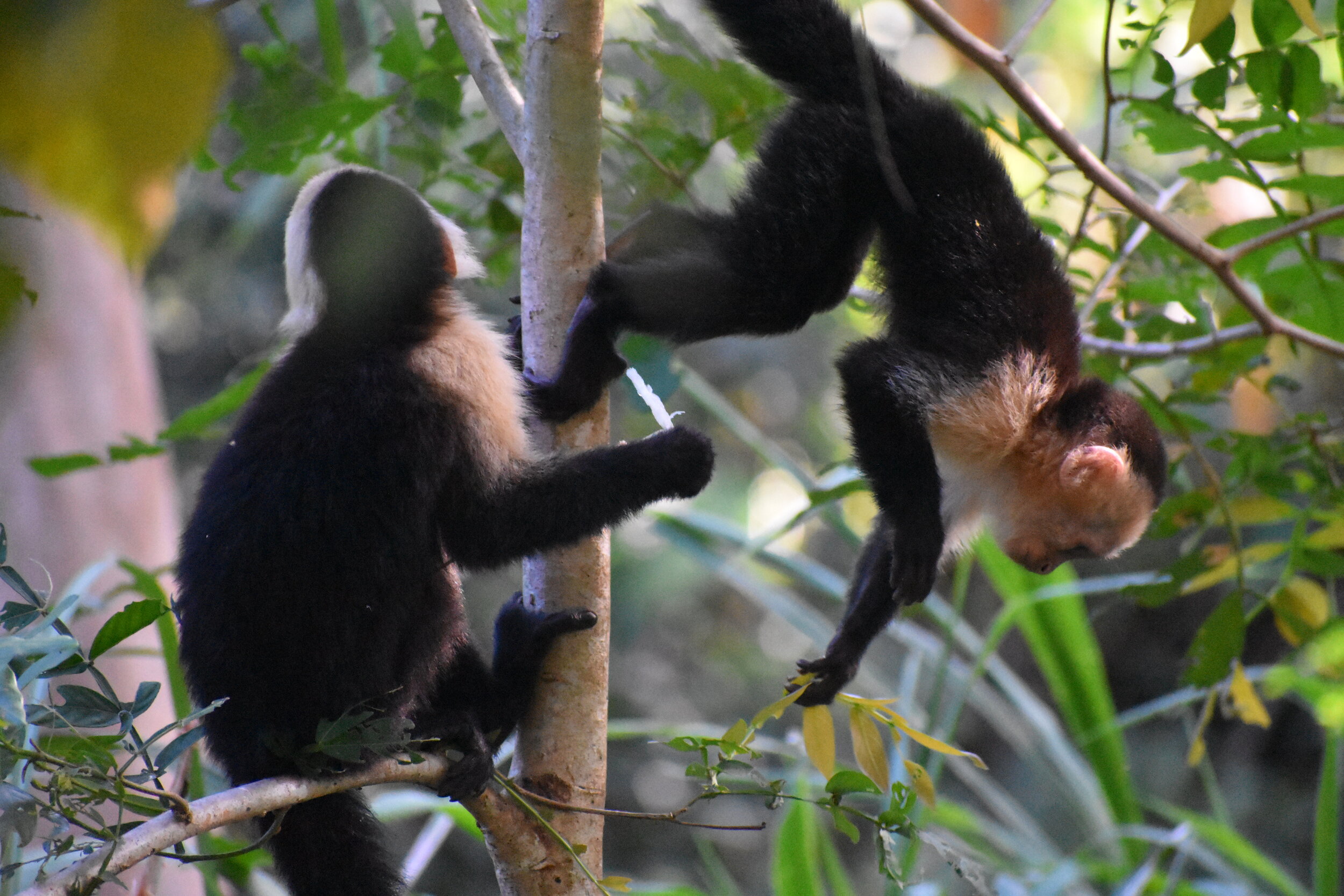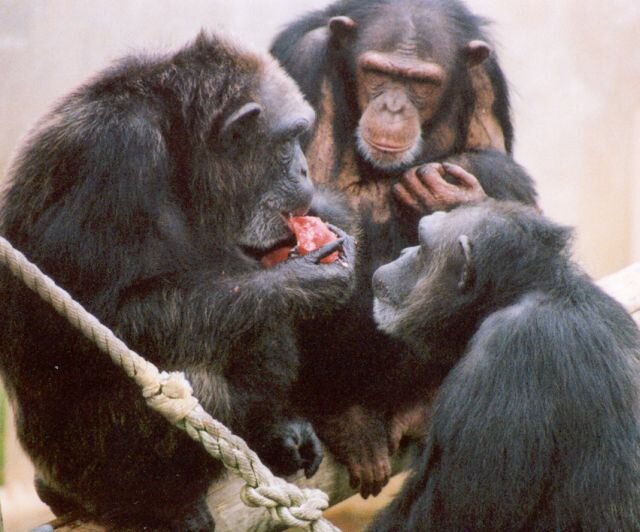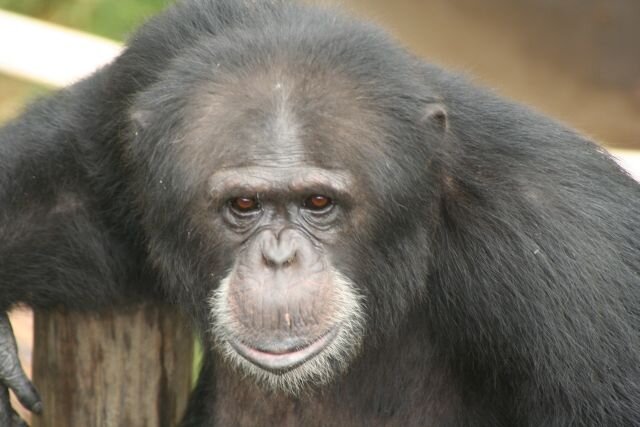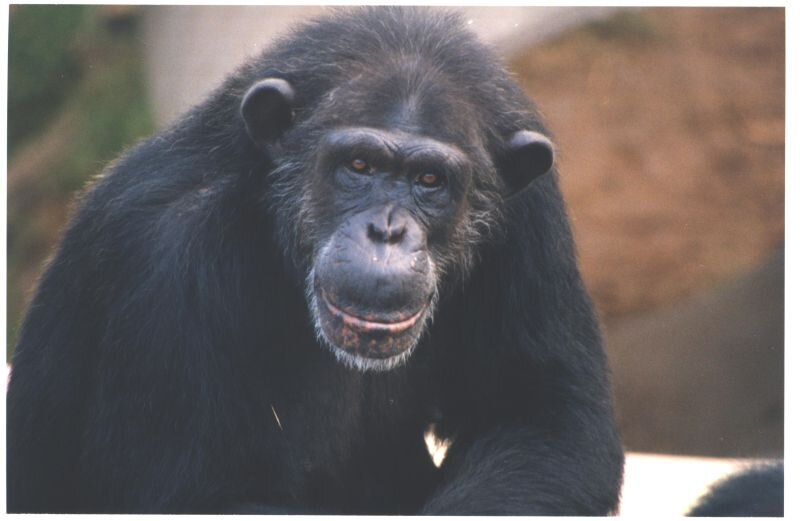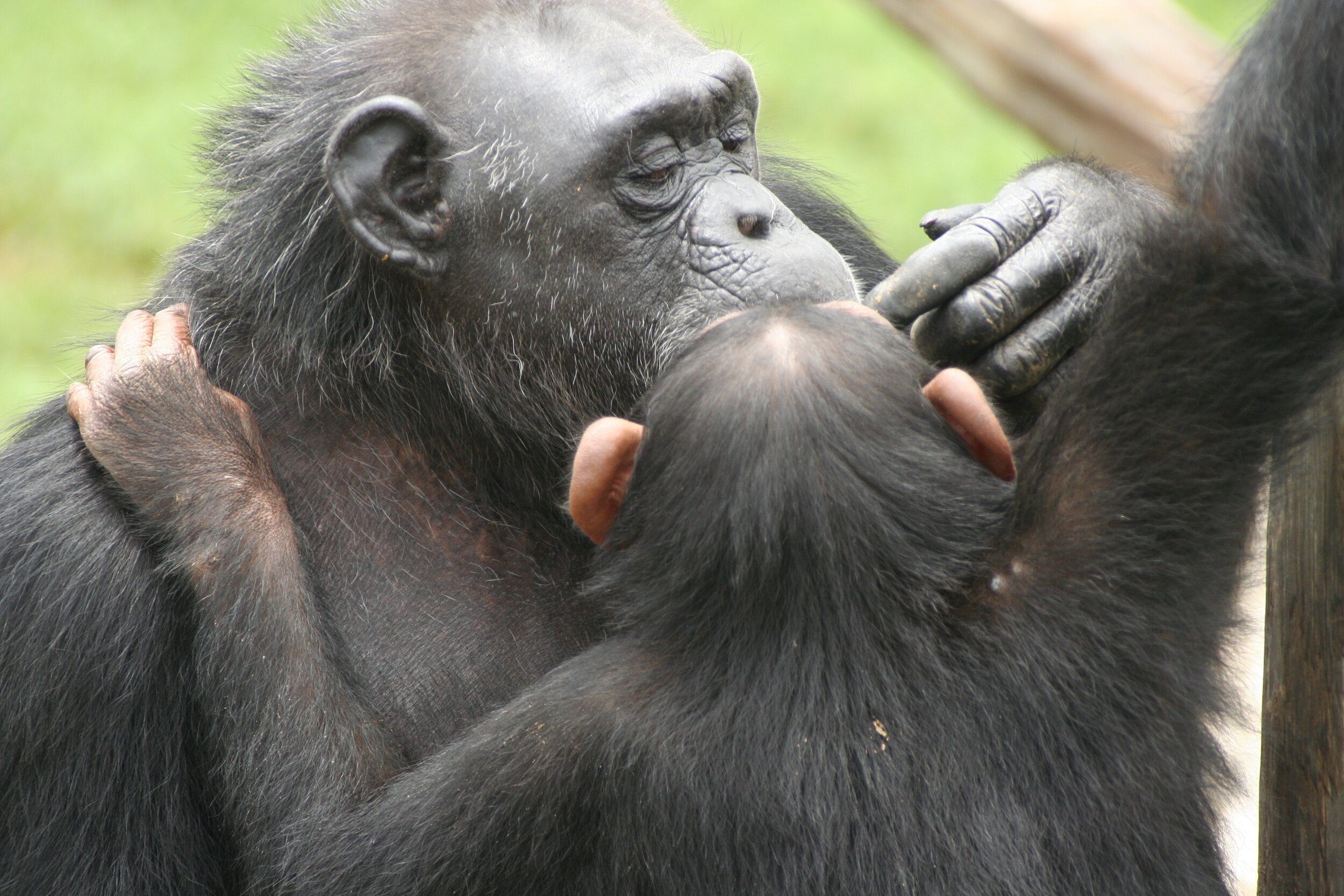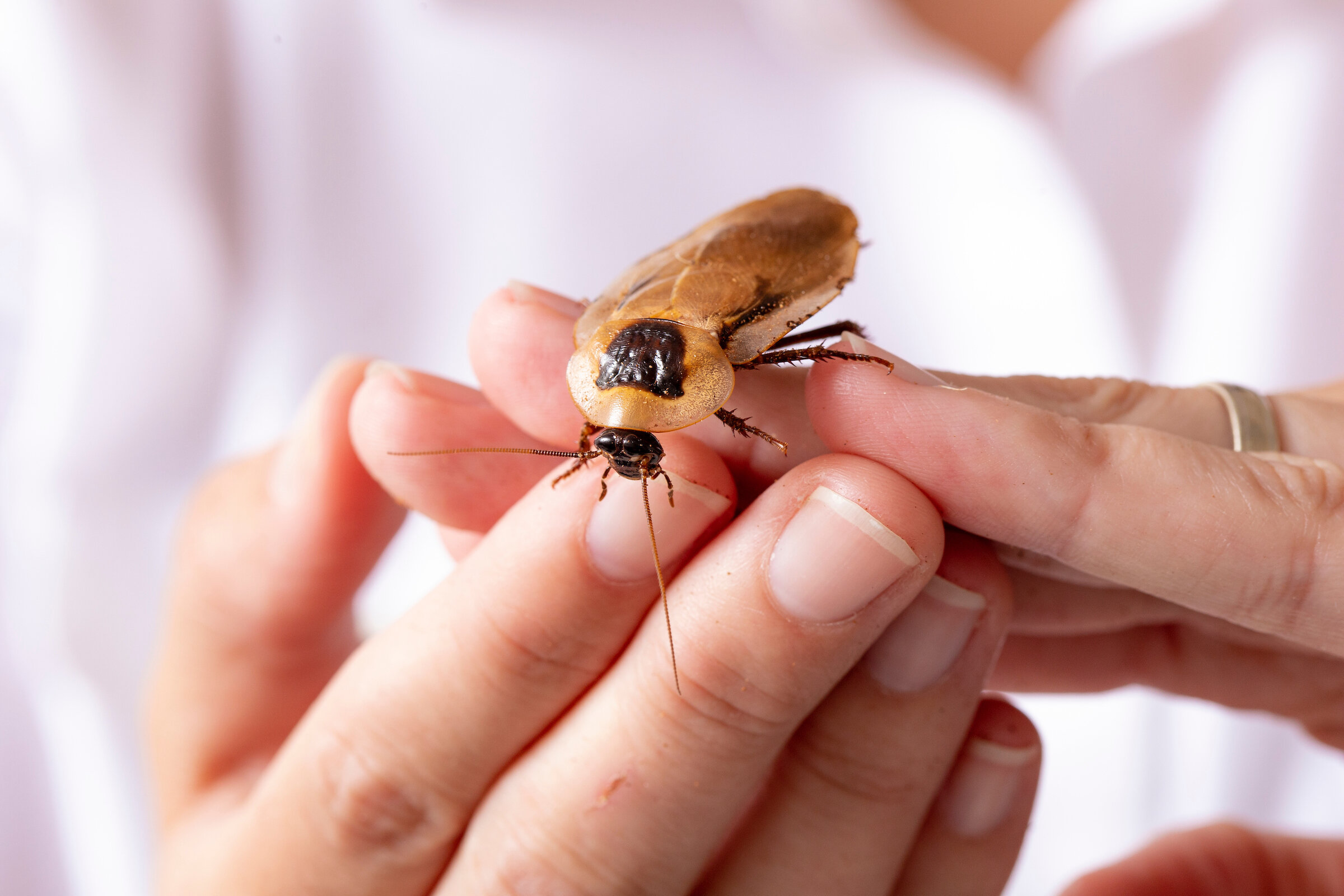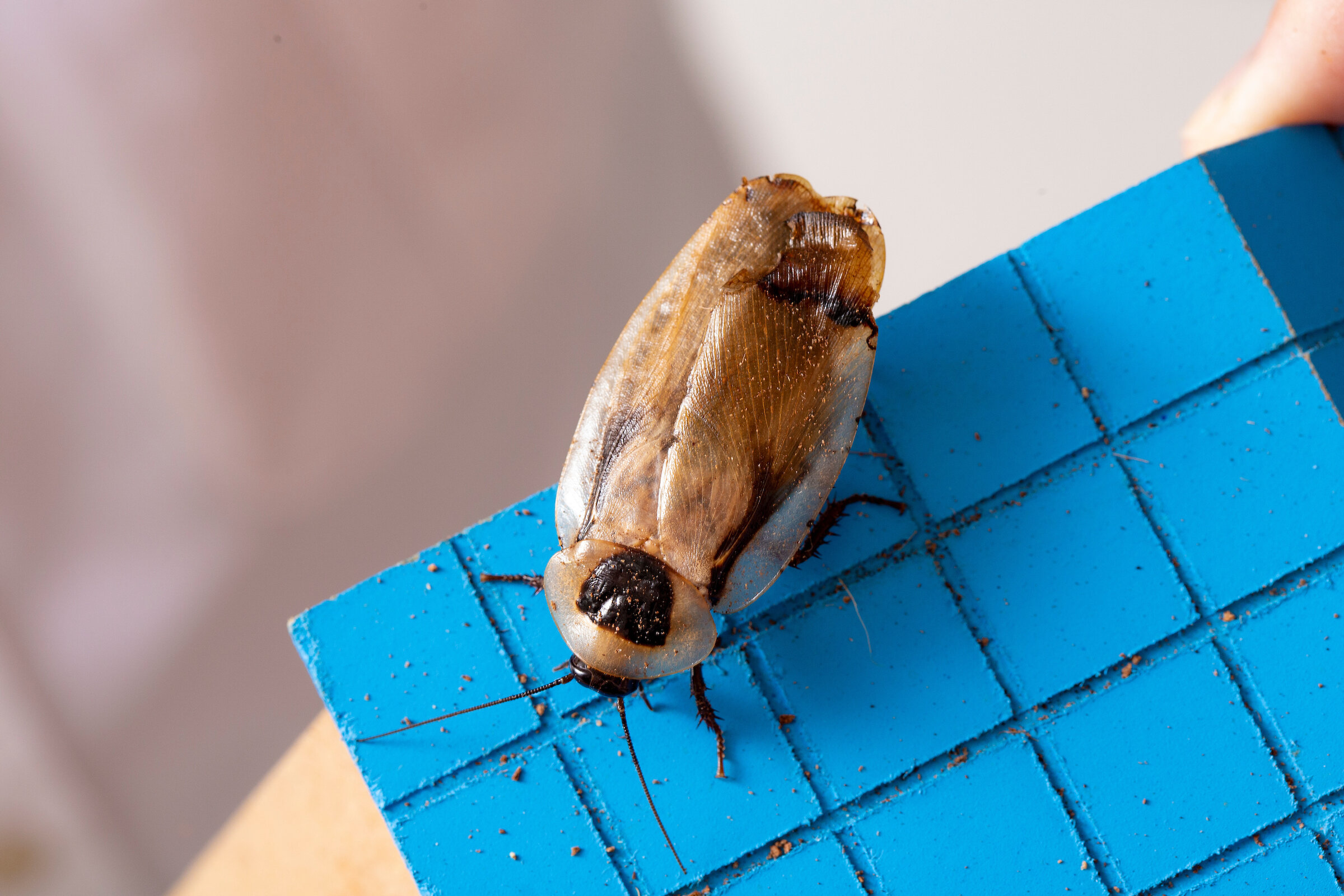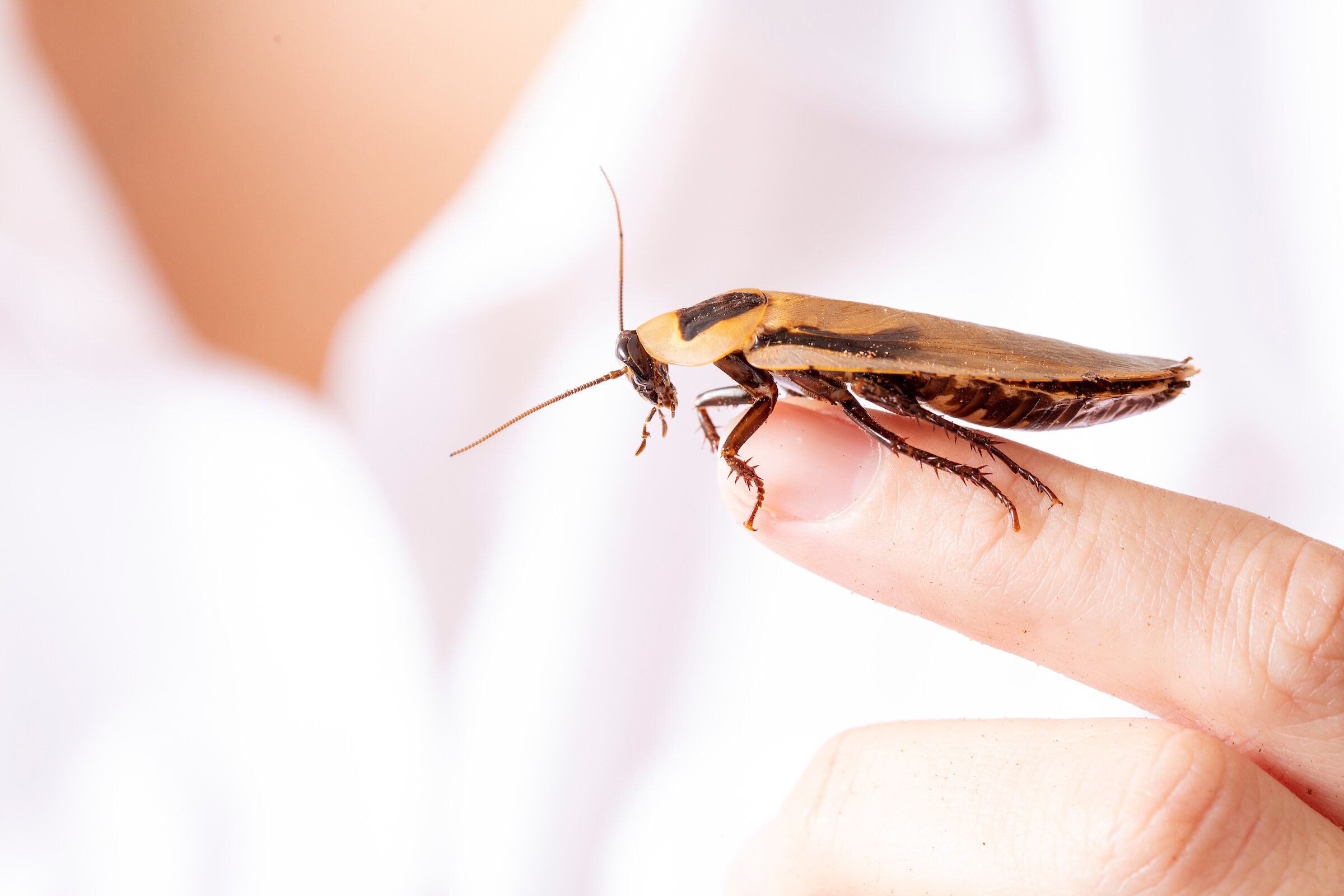Our Study Species
Brown Capuchins @ the language research center
Capuchin monkeys are one of the primary species we study. Most of our work is done at the Language Research Center of Georgia State University, where we study social behavior and cognition in five mixed sex social groups of monkeys. Capuchins are highly social and have complex social relationships, including cooperation, making them a wonderful study species for our lab’s questions. We have worked with these monkeys for more than two decades and learn new things from them every day.
White Faced Capuchins @ Capuchinos de taboga
We also study white faced capuchin monkeys in the field at Capuchinos de Taboga, in Taboga Forest Reserve, Guanacaste, Costa Rica. This is an international collaboration between the University of Michigan, GSU, Michigan State University, the Universidad Téchnica Nacional in Costa Rica, and the Sistema Nacional de Areas de Conservacion. Our work is led by Dr. Marcela Benítez, a Co-Director of the field site. Here we study behavior, cognition and endocrinology in the field with a growing number of habituated social groups.
Chimpanzees @ the National Center for Chimpanzee Care
Chimpanzees are vitally important to our understanding of human behavior and cognition because they are one of the two apes that are the most closely related to us. We have studied chimpanzee social behavior and cognition in collaboration with Dr. Steven Schapiro and Susan Lambeth at the National Center for Chimpanzee Care, Bastrop, TX for nearly twenty years.
Other Ape and monkey species
Although capuchins and chimpanzees are our main focus, we also work with a variety of other monkey species, which is critical to understand how behavior and cognition varies across species and what are the social and ecological factors that shape similarities and differences. We work with squirrel monkeys and owl monkeys in collaboration with Dr. Larry Williams and rhesus monkeys at the Language Research Center. We also collaborate with the researchers and staff at Zoo Atlanta to work with orangutans, gorillas, and drill monkeys.
Humans
One of key goals is to understand the evolution of human decision-making, but we can’t do that without knowing how do primates’ responses compare to humans’. This is particularly important when using tests that are drawn from the human literature, but that we may need to alter to use with other species. Thus, for many of our studies, we repeat the experiment with humans, typically either children or college students. If you are interested in your child participating, please contact us or visit the GSU Child Research Group to learn about our colleagues’ work.
Cockroach cognition
What do you do when you see a cockroach? We want to learn what they know! We collaborate with Dr. Darby Proctor at Florida Tech, who has developed a series of animal behavior labs to study behavior and cognition using cockroaches in order to give undergraduates a hands on experience to enrich their learning. In conjunction with this, we are collaborating with Darby on a series of research studies with discoid cockroaches. You can learn more about Darby’s work at Roachlab.org.
Reptiles @ Zoo Atlanta
Part of a comparative approach is understanding how primates’ behavior and cognition relates to other species’. This is particularly important for historically understudied species . Often they surprise us! We collaborate with Dr. Joseph Mendelson at Zoo Atlanta to study cognition and behavior in reptiles, study topics like problem solving and number discrimination with box turtles and a variety of lizard species.
Brown capuchin photos by Kate Talbot. White faced capuchin, chimpanzee, squirrel monkey, and gecko photos by Sarah Brosnan. All other reptile photos by Joseph Mendelson. Roach photos by Dominic Agoustin, courtesy of Florida Tech. None of these photos may be reproduced or used in any form without the express written consent of the photographer.

